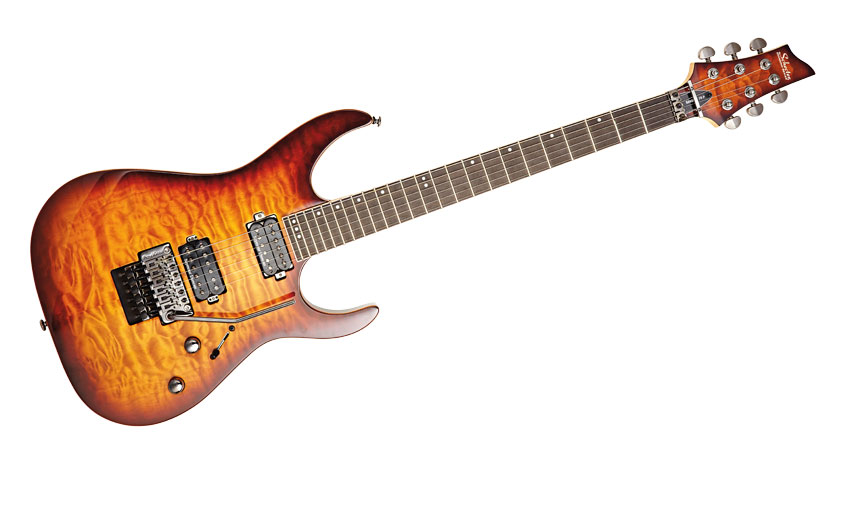MusicRadar Verdict
The Banshee is among the finest-playing double-cuts at this price point, and that's really something to scream about.
Pros
- +
Great components. Supremely playable. Excellent value for money.
Cons
- -
Single-coil tones a little twangy, but we're nit-picking...
MusicRadar's got your back
For over three decades, Schecter guitars have found favour in diverse corners of rock, including Pete Townshend and Robert Smith. However, most of the company's fans - including the likes of Synyster Gates and Jeff Loomis - reside in the modern metal camp, and it's here that the Banshee seems to stake its claim.
Build
We say 'seems', because it's much more than the sum of its parts. But what parts they are. You've got Grover Rotomatic tuners, a genuine Floyd Rose 1000 Series locking vibrato and a pair of Seymour Duncan humbuckers (an EMG 81/85 combo is available on the Banshee 6 FR Active).
"This guitar is so effortless to play that it's almost debilitating"
But the Banshee's secret weapon is its humble tone pot: pull it and the coil-split turns those 'buckers into single coils, cutting the output and upping the twang.
The Banshee's no slouch when it comes to playability, either. The multi-laminate maple and walnut neck is complemented by a smooth ebony fingerboard and compound radius - a common find on shred-orientated instruments, but it's rare that it's implemented this well.
Transitioning from the 305mm (12-inch) radius at the lower frets to the 406mm (16- inch) radius at the widdly end is seamless, making open-position chords just as comfortable as legato playing up top - the comfy lower cutaway helps here, too.
In fact, this guitar is so effortless to play that it's almost debilitating - with no limits to your fret access, the fingerboard is your proverbial oyster. The supple Floyd Rose vibrato only augments that sensation: it will take anything you can throw at it - divebombs, gargles, dramatic shifts in pitch - and still come out with perfect tuning on the other side.
Sounds
Then there are the tones. The obvious start point is to kick onto the distortion channel, flick to the bridge-mounted Seymour Duncan JB SH-4 and let rip. Predictably, the Banshee excels here - the JB SH-4 is one of the world's most popular pickups for a reason. It's incendiary for leads while retaining definition for lower-string riffs.
Want all the hottest music and gear news, reviews, deals, features and more, direct to your inbox? Sign up here.
However, the Banshee also has a softer side. The neck '59 SH-N is warm and rounded, and activating the coil-split reveals a thinner, snappier voice that echoes classic single-coil designs, especially in conjunction with the alder body. Likewise, the coil-split bridge humbucker gets bright... really bright.
If we were to level a complaint at the Banshee, it would be that the single-coil sounds are a little too twangy. But to grumble would be churlish: wringing single-coil tones from a 'bucker-loaded axe is simply a bonus.
With all the right components, it's hard to see how the Banshee can fail - and handling one confirms its quality. It's an obvious buy for shredders and metalheads, but guitarists of any genre could find a sound they love here. The playability just seals the deal.
Mike is Editor-in-Chief of GuitarWorld.com, in addition to being an offset fiend and recovering pedal addict. He has a master's degree in journalism, and has spent the past decade writing and editing for guitar publications including MusicRadar, Total Guitar and Guitarist, as well as a decade-and-a-half performing in bands of variable genre (and quality). In his free time, you'll find him making progressive instrumental rock under the nom de plume Maebe.

